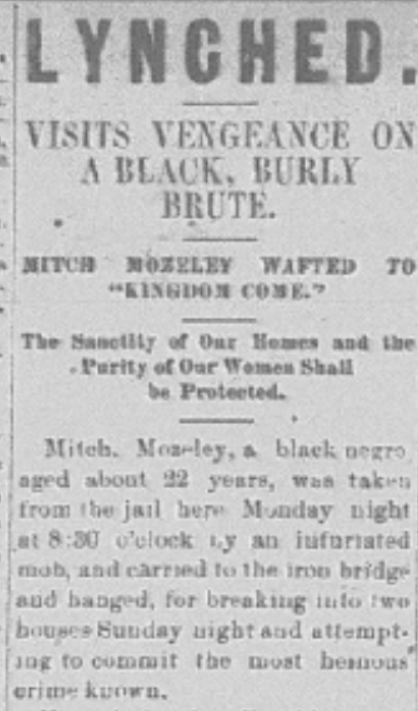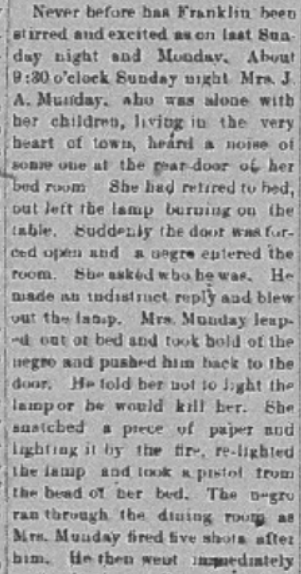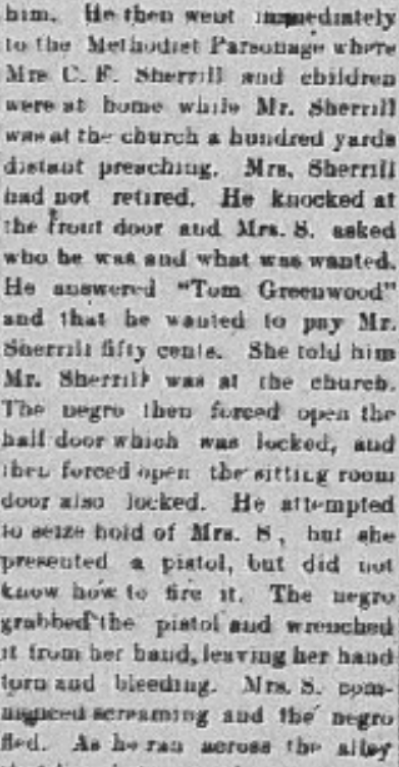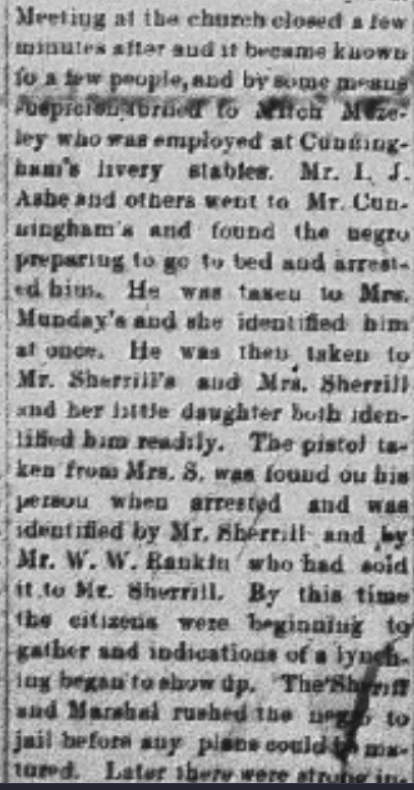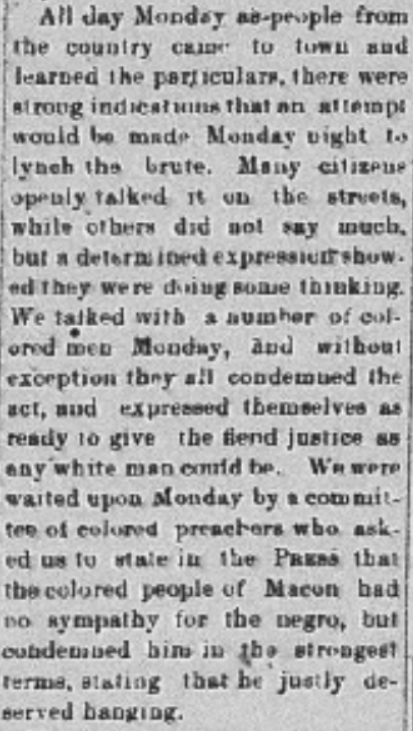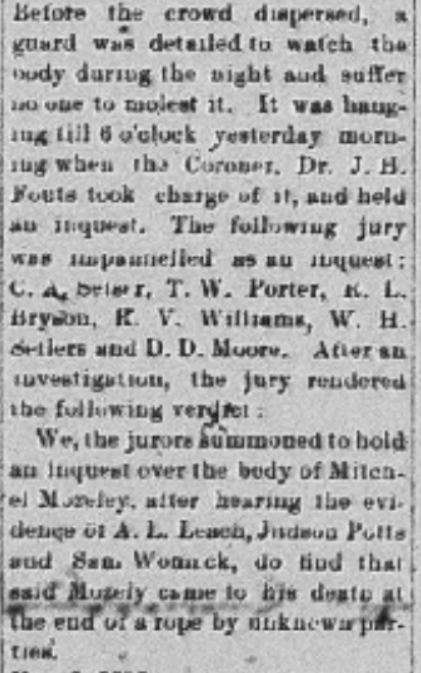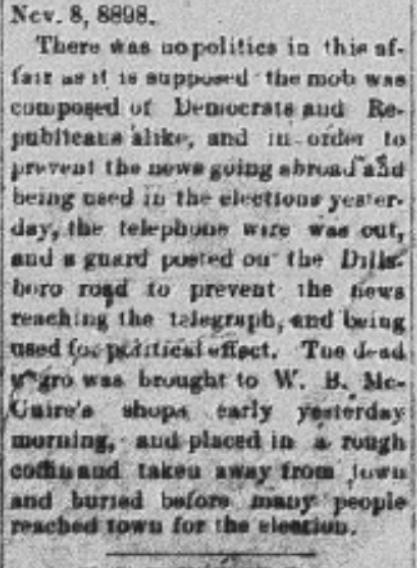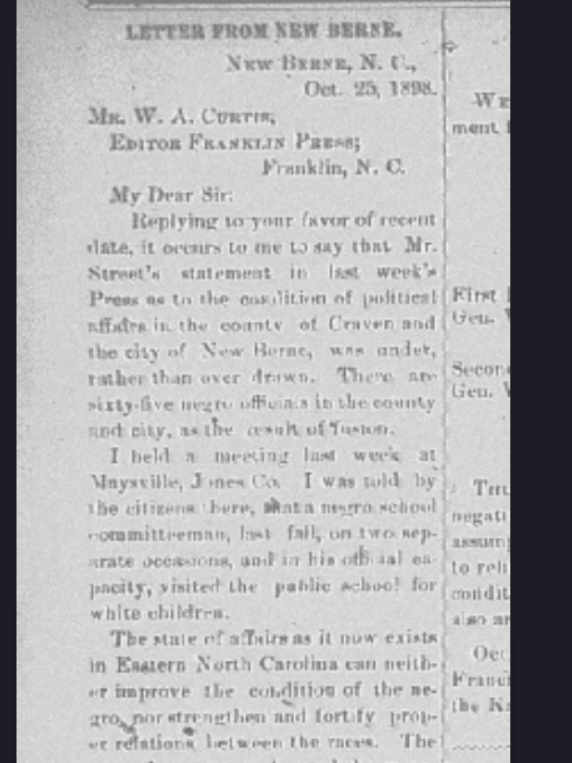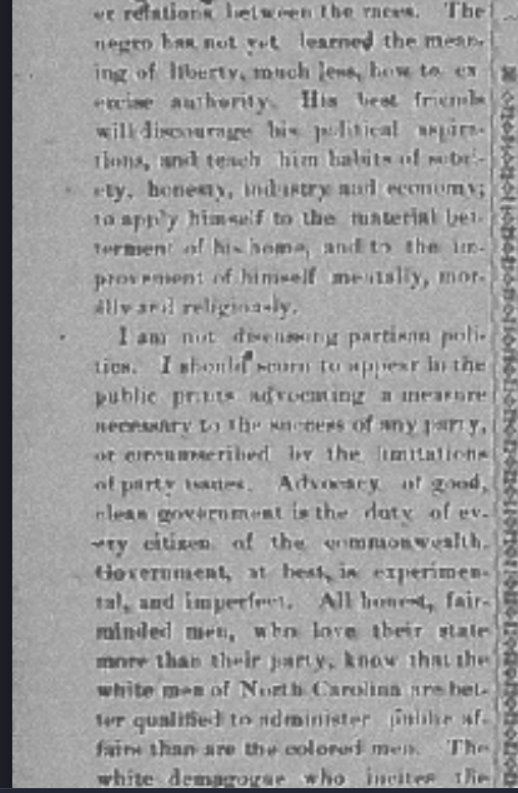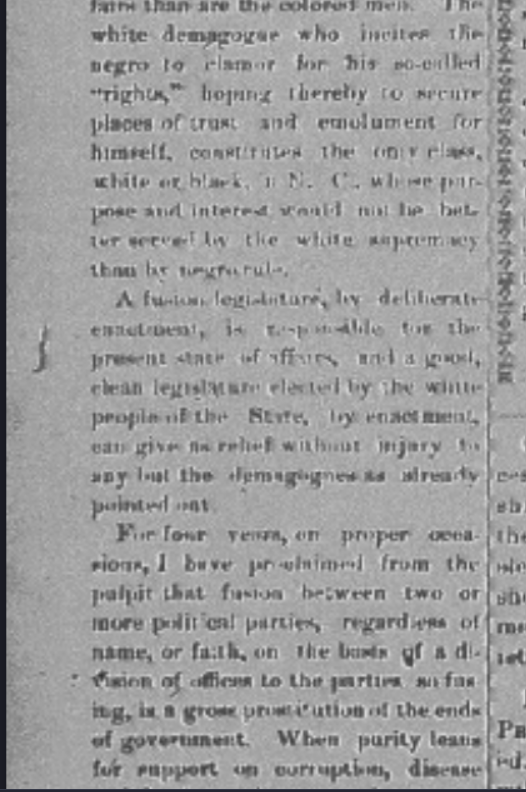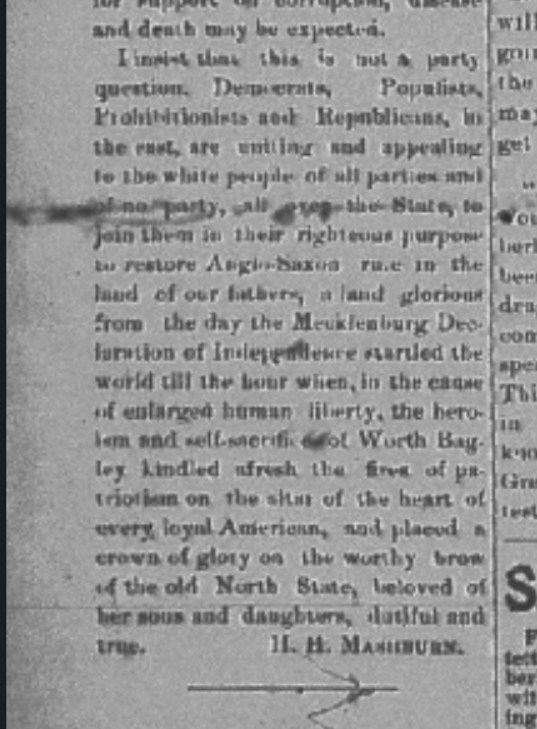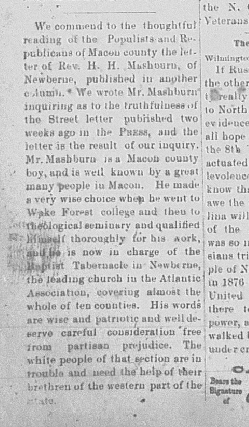TRIGGER WARNING THIS PAGE IS DEDICATED AS A HISTORICAL DEPICTION OF A LYNCHING IN MACON COUNTY AND MAY BE DISTURBING TO READ. PLEASE PROCEED WITH CAUTION.
In November of 1898, a violent mob of approximately 150 – 300 citizens of Macon county stormed the jail where Mitch Mozeley (at times spelled Mosely) awaited trial. Mr. Mozeley, was an employee of Mr. Cunningham, a livery stable owner in the heart of town; his livery stable was located on Palmer Street. Mitch had been accused of breaking in and entering and attempted rape of two prominent white women in town, Mrs. Munday, of the Munday house hotel and Mrs. Sherrill, a preacher’s wife. Mr. Mozeley was lead to an iron bridge on the east side of town and lynched by the mob. Below you will find an examination of the events leading up and the lynching itself.
Trigger warning, many of the pieces below contain racially charged language and reference sexual assault and may be disturbing to read.
“Not only is it true that many of the alleged cases of rape against the Negro, are like the foregoing, but the same crime committed by white men against Negro women and girls, is never punished by mob or the law. A leading journal in South Carolina openly said some months ago that “it is not the same thing for a white man to assault a colored woman as for a colored man to assault a white woman, because the colored woman had no finer feelings nor virtue to be outraged!” Yet colored women have always had far more reason to complain of white men in this respect than ever white women have had of Negroes.”
― Ida B. Wells-Barnett, The Red Record
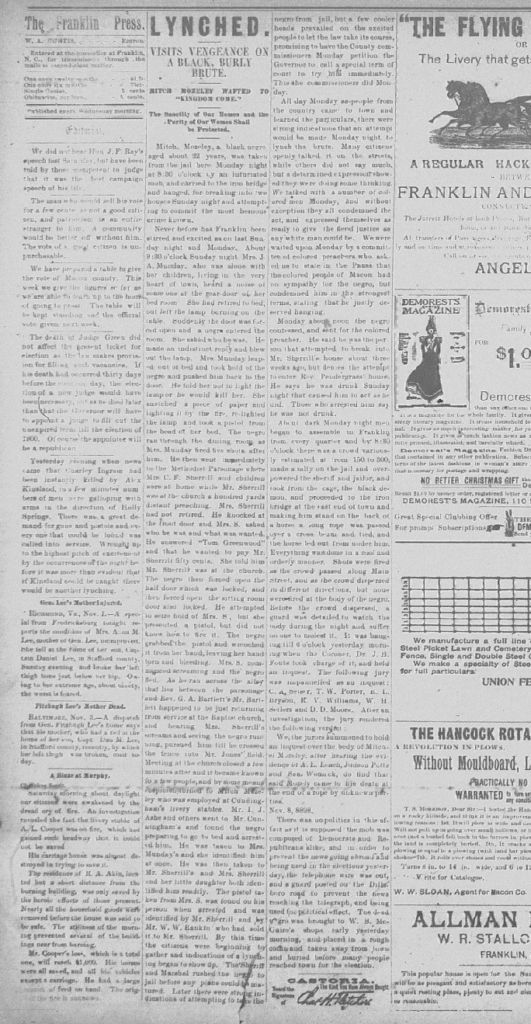
Below are enhanced views of the article.
Over time, with careful examination of the Franklin Press articles in weeks leading up to the murder of Mr. Mozeley. I began to notice some discrepancies in the reporting. In the weeks leading up to the public execution, there had been two reports of break-ins in the heart of town. In a previous report, on or around October 19, 1898, a young girl, Hattie Love, staying with the Sherrills was the victim of the attack. Not Mrs. Sherrill as the reporting of the lynching describes. The time of day in which the alleged attack occurred does not align with the original of “an attempted outrage”. Originally, the Franklin Press reports that the attack occurred at four o’clock in the morning. Not in the evening before Mrs. Sherrill retired for the night. In the second report, Mrs. J.R Pendergrass’s home had been broken into as reported on October 26, 1898. In the reporting, Mr. Mozeley had only confessed to breaking into Rev. Sherrill’s home. He did not confess to breaking into the Munday house, the Pendergrass house, or attempted rape.

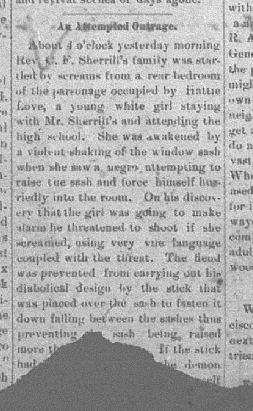
Note: At this time in 1898, the right to a fair and speedy trail had already been established by the 6th amendment of the Constitution.
Note: Prior to November of 1898, African American men had held office and served on juries in North Carolina.
Death hangs heavy in the air
1898 was a deadly year for people of color in North Carolina. The Democratic party had been running a fear campaign catering to the the insecurities and prevalent racism of the time.
“The “white supremacy campaign” was exactly that. The Democrats repeatedly stated that only white men were fit to hold political office. They often accused the fusionists, especially the Republicans, of supporting “negro domination” in the state. Indeed, there were a large number of African American officeholders, some of whom had been elected and many more who were appointed to office. The Democrats referred to themselves as the “white man’s party” and appealed to white North Carolinians to restore them to power.” Below is a link to UNC’s online exhibit for the election of 1898, which details the racially charged events that lead up to the Wilmington insurrection. https://exhibits.lib.unc.edu/exhibits/show/1898
The Timeline
Aug 18, 1898 – Alex Manly publishes his piece “slandering” white women.
Sept 14, 1898 – Republican and Populist meetings in Macon
Sept 14, 1898 – Democratic primaries in the district
Sept 21,1898 – Franklin Press runs a piece that talks on Republicans falsely reporting that Democrats plan to disenfranchise Black voters.
Oct 5, 1898 – Pearson and Crawford – congressional house candidates make speeches near court house in Macon County.
Oct 12, 1898 – Ed Cunningham’s white supremacist letter from relative living in New Bern is published in Franklin Press
Oct 19, 1898 – On or near Oct 19 (a few cover pages are missing) Hattie Love’s bedroom in the Sherrill’s home is broken into by unknown assailant described as a African American man
Oct 19, 1898- The Franklin Press publishes a piece about an African American magistrate in Wilmington.
Oct 26, 1898 – Unknown assailant tried to break into Pendergrass house. Vivian Pendergrass, Mrs. Pendergrass’s son, fires three shots at the retreating assailant.
Oct 26, 1898 – Wilmington Star ad in Franklin Press betting that Democrats will win elections. Please note Wilmington NC is approximately 388 miles from Macon County.
Oct 26, 1898- Franklin press claims that there are not enough Republicans or populist to win any offices.
Oct 26, 1898 – Franklin press reports in Local and Personal that a jury in Wilmington consisted of 11 African Americans and one white man
Oct 26, 1898 – Franklin press reports that in Caswell County a African American man will be running for legislature.
Nov 2, 1898- H.H Mashburn a former Macon man now a minister living in New Bern replies to the Franklin Press’s editor W.A Curtis further inciting feelings of white supremacy in Macon.
Nov 2, 1898- J.H Dillard and Joel Crisp denounce the Democratic party but also denounce Alex Manly’s article on the “slander of white women”.
Nov 6, 1898 – Mitch Mozeley is lynched the day before elections.
Nov 7, 1898 – NC state elections held.
Nov 10, 1898 – Wilmington Insurrection.
Nov 10, 1898 – Gov Russell sent correspondence to Macon for a special trail for Mitch Mozeley.
Nov 30, 1898- Mitch’s lynching is reenacted by local children by hanging a stuffed doll from a limb over a road.
Dec 5, 1898 – Mitch would have been tried on this day by a superior court.
May 9, 1900 – A congressional investigation into Pearson V Crawford and its connection to voter suppression, fraud, and Mitch Mozeley’s murder. For more information on the investigation please see the congressional records linked below.

Sept 14, 1898

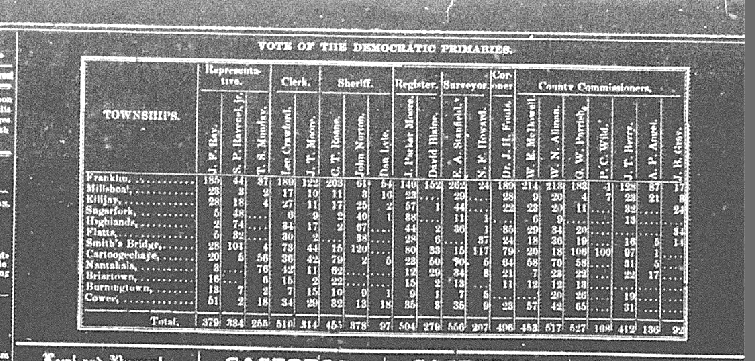

Sept 21, 1898

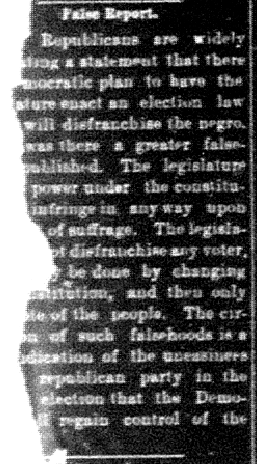

Oct 5, 1898
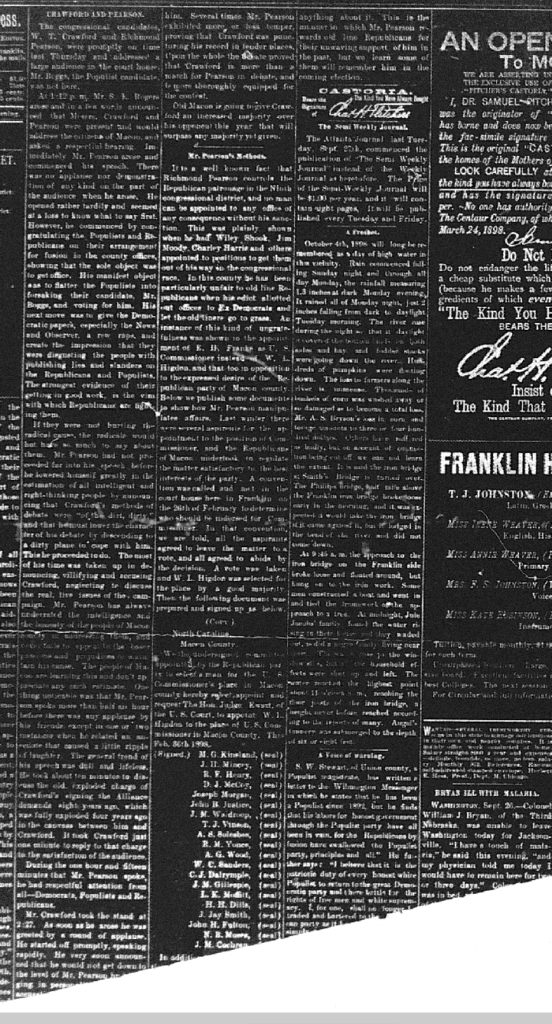
Below are some some slightly clearer images of the Crawford V Pearson coverage.




Oct 19, 1898
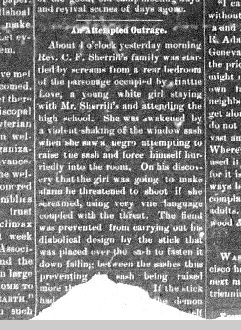
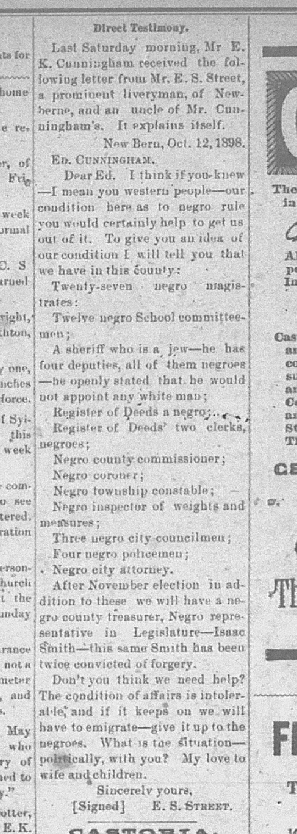
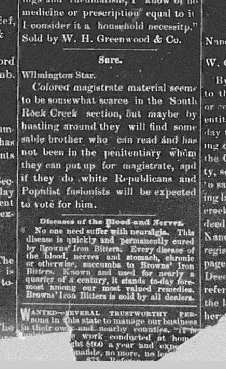

Oct 26, 1898
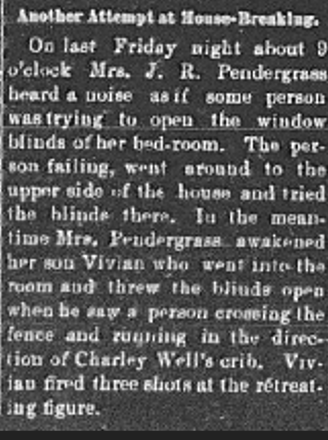
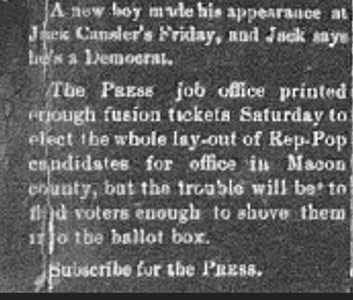

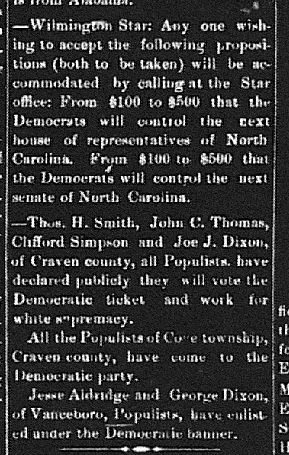
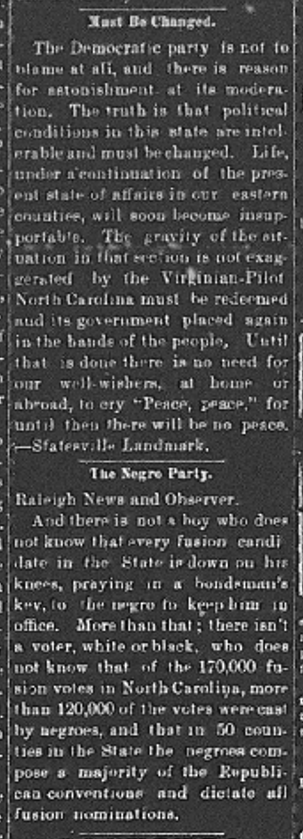
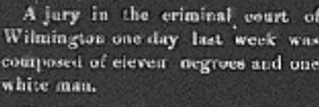

Nov 2, 1898
November 2nd Franklin press editorial is the reply from a Reverend H.H Mashburn a former resident of Franklin who, at the time was in charge of Baptist Tabernacle of New Bern. I have included the biography given in the Franklin Press Reverend Mashburn below.

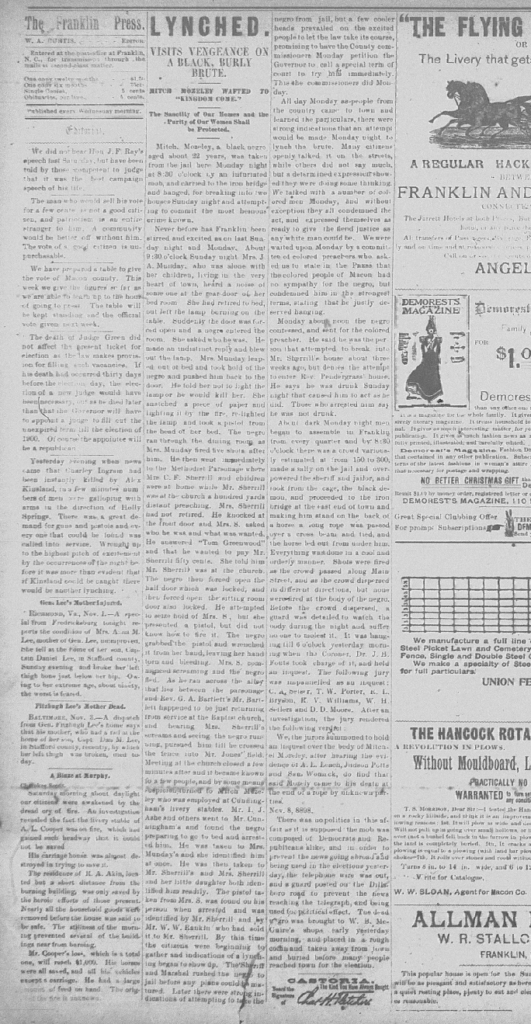
November 8, 1898.
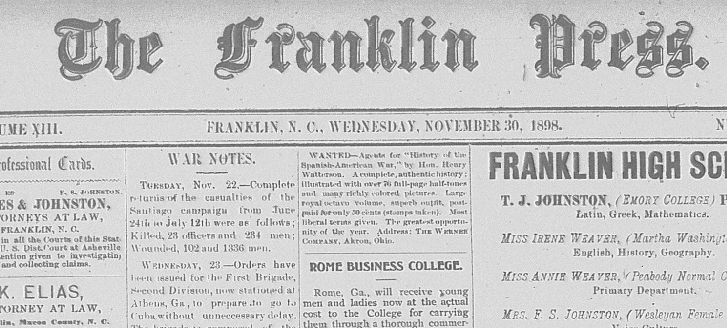
Nov 30, 1898
Macon’s children recreate the ritual.
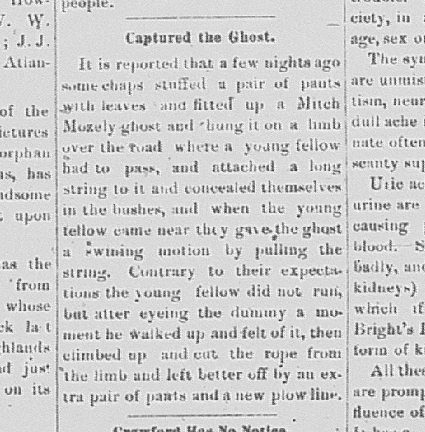

Nov 10, 1898.
Mitch would have been tried on December 5, 1898 had he not been lynched.
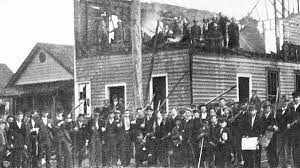
Nov 10, 1898
The Wilmington Insurrection
The Ashe story
The Ashe story as recorded on page 110, article 29 of “The Heritage of Macon County North Carolina Vol. 1” Published by the Macon County Historical Society.
“Issac served Macon county as U.S Marshal and Constable. One memorable incident occurred while he was Constable. He was told by local men to remain at home and that night Mitch Moseley, a local Negro, was taken from the jail and hung on the old Tennessee River Bridge.”
Issac J Ashe Oct 15, 1850 – May 1, 1926

Mr. Mozeley’s memorial at The National Memorial for Peace and Justice in Montgomery, Alabama.
Please note, I am actively updating this page. If you have any questions, comments or concerns please feel free to message the page.

